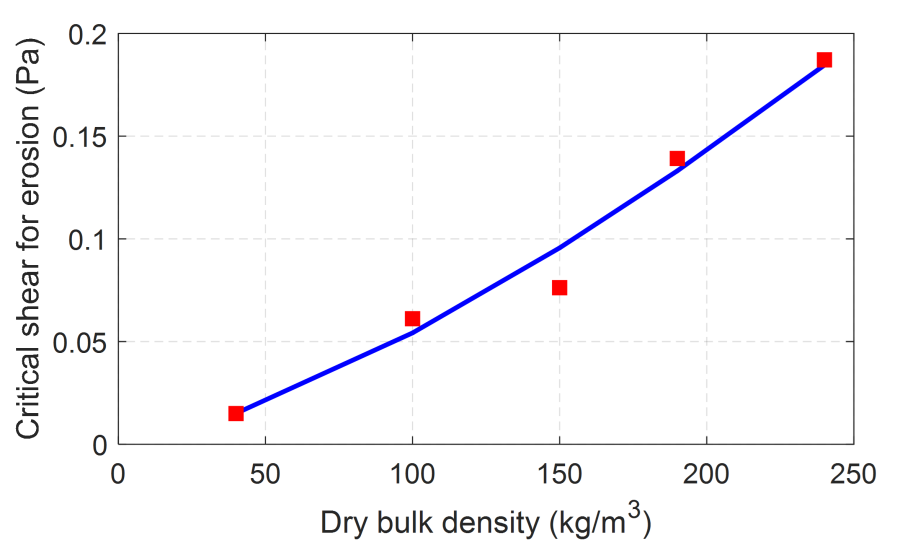The cohesive parameters in HEC-RAS are: (1) critical shear for erosion, (2) erosion rate coefficient, (3) critical shear for mass erosion, and (4) mass erosion rate coefficient. It is well known that these parameters can be sensitive to the bulk density. If the user specifies sediment bed layers, the parameters can be computed with power-law functions to represent these parameters as a function of the dry bulk density. Utilizing functional forms of the cohesive parameters has several benefits. Firstly, it provides a way of computing the cohesive parameters for newly deposited sediments. Secondly, since the bed dry density is continually updated during the simulation due to bed mixing and consolidation, the functional form provides a convenient and robust way of computing the cohesive parameters.
The user-specified cohesive parameters are interpreted as initial values corresponding to the initial dry bulk density of the bed. If bed layers are specified, the bed layer values are utilized to fit the coefficients to the power-law function. The power-law form fitted to each cohesive parameter is
where P is one of the cohesive parameters and a and b or fitted empirical coefficients. If a single bed layer is specified, the coefficient b is assumed to be one. Otherwise if multiple bed layers are specified, the power-law equation is fit using a weighted least-squares in log-space as
| 2) |
a = \exp \left(\overline{y}_w - b\overline{x}_w \right) |
| 3) |
b = \frac{\sum_i w_i \left(x_i - \overline{x}_w \right)\left(y_i - \overline{y}_w \right)}{\sum_i w_i \left(x_i - \overline{x}_w \right)^2} |
where
\overline{x}_{w}=\frac{\sum _{i}w_{i}x_{i}}{\sum _{i}w_{i}}, \overline{y}_{w}=\frac{\sum _{i}w_{i}y_{i}}{\sum _{i}w_{i}}, x_i = \ln(\rho_{d,i}),y_i = \ln(P_i),
w_i = ρ_{d,i}^{−2}
As an example, the figure below shows a curve fit to the critical shear for erosion as a function of the dry bulk density.

Figure 1. Example power-law fit to critical shear for erosion as a function of the dry bulk density.
If a single bed layer or no bed layers are specified, then the cohesive parameters are assumed to be constant (i.e. b = 0).